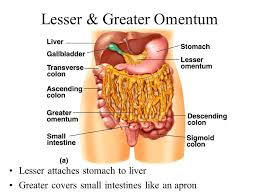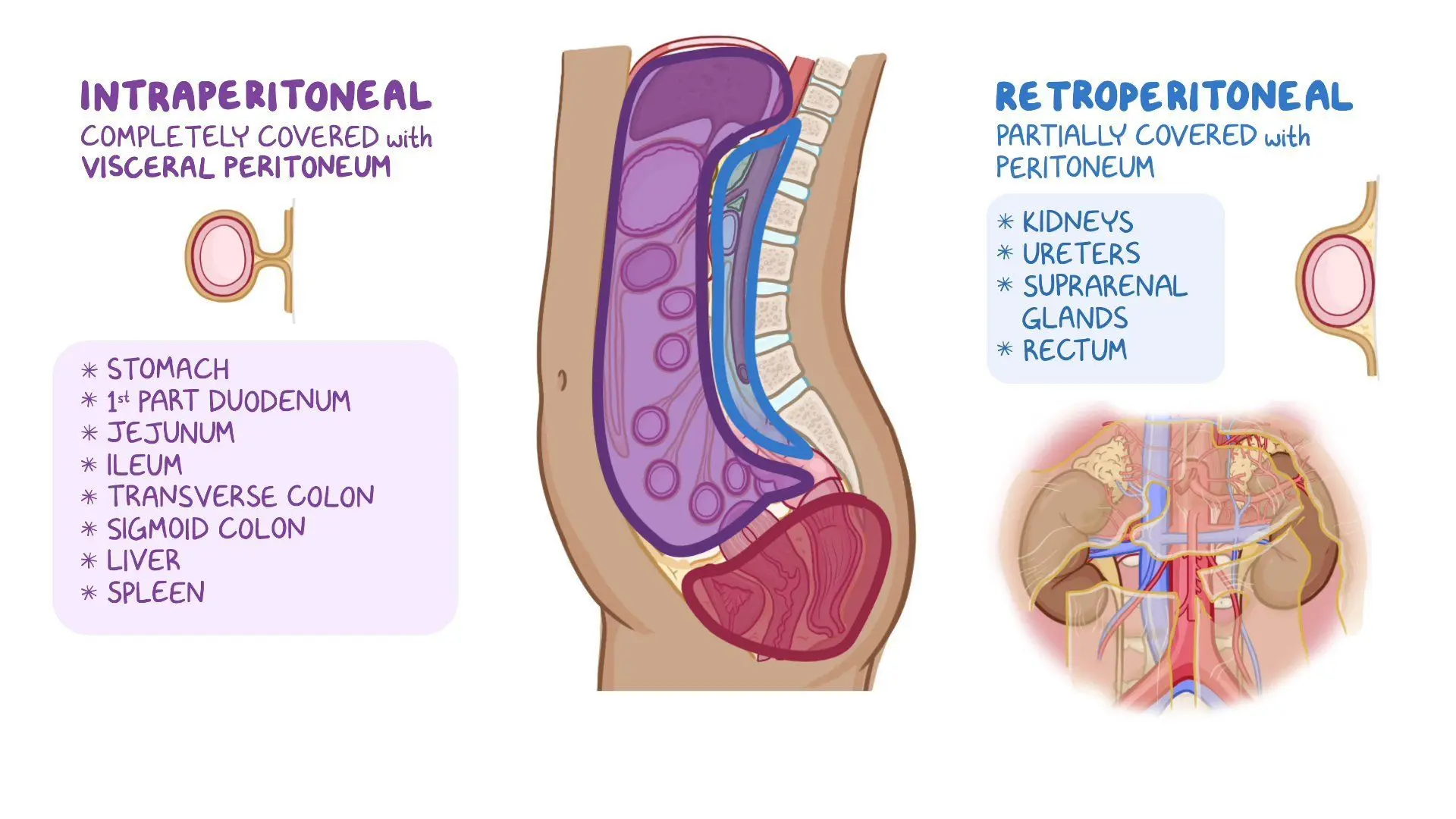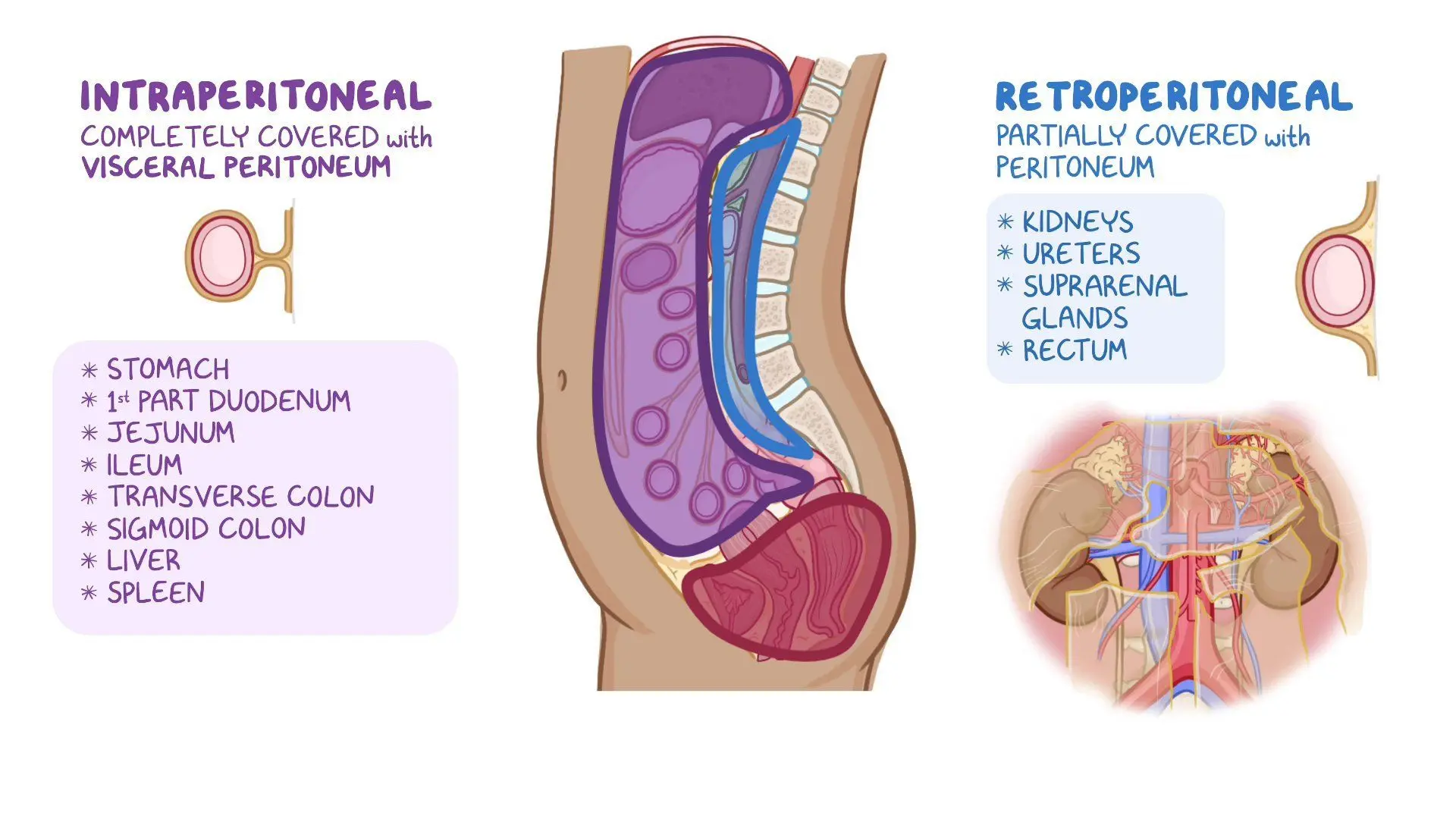Abdomen Quiz Study Guide Filled Out
1/58
Earn XP
Description and Tags
Abdomen Anatomy
Name | Mastery | Learn | Test | Matching | Spaced |
|---|
No study sessions yet.
59 Terms
The membrane that lines the Abdominopelvic Cavity:
Parietal Peritoneum + Visceral Peritoneum
Omentum:
double-fold of peritoneum(membrane that lines the abdominopelvic cavity) that attaches the stomach to other abdominal organs
(yellow bits in the image)

Intraperitoneal structures: list all

Retroperitoneal structures: list all

Body Habitus characteristics of organs of the Abdomen
Positive Contrast Media
radiopaque
Negative Contrast Media
radiolucent
Contra-indications for Barium Sulfate
Functional examinations (IVU)
Motility examination - SBFT
all names of Contrast Procedures
SPOT image during a fluoroscope
Overhead image during a fluoroscope
Bolus
chyme
Indentations of esophagus
Constrictions of Esophagus
the opening in the diaphragm where the Esophagus enters the abdominal cavity
hiatus
Duodenal Bulb
produces Cholecystokinin (hormone) which causes the Gallbladder to contract
Descending Duodenum
receives Common Bile Duct and Pancreatic Duct at Ampulla of Vater
Flow of bile / pancreatic enzymes into Ampulla of Vater controlled by Sphincter of Oddi
Proximal to distal structures of the Duodenum (Also called C-Loop of Abdomen)
Portion of the digestive tract that has finger-like projections called microvilli, which absorb digested
nutrients
ACBE
BE
Polyps best demonstrated on ACBE
Contrast procedure that requires fluoroscopic imaging of the Ileocecal Valve at the conclusion of the
examination (SBFT)
what performs the MECHANICAL digestion of fats
Liver produces bile for
what performs the CHEMICAL digestion of fats
Pancreas produces enzymes for
Biliary Tree – All Ducts
Portal Vein
tunnel used to transport absorbed nutrients from Jejunal microvilli to Liver
Pancreatic Duct – other name
(Duct of Wirsung)
Contrast procedure that will demonstrate an obstruction caused by the presence of choleliths (ERCP)
Parts of the Kidney (Cortex / Medulla / Minor and Major Calyces / Renal Pelvis / Upper Pole / Lower
Pole
UVJ / UPJ – what structures meet to form these junctions?
Anatomy of Urinary System on IVU image and distinguishing what procedure it is
Purpose of PA Projection (prone position) for IVU
fills distal ureters with contrast media
Contrast procedure performed to rule out reflux of urine from the Urinary Bladder into the Ureters
Volvulus
type of what
Mechanical Bowel Obstruction
Adhesions
type of what
Mechanical Bowel Obstruction
Intussusception
type of what
Mechanical Bowel Obstruction
Ileus
type of what
causes of
adynamic Bowel Obstruction
Ascites
type of what?
what is it?
Abdomen pathology (disease?)
Fluid in the Peritoneal Cavity
What body plane is perpendicular for AP projection of the Abdomen?
Midsagittal
Where is the CR directed for the AP Projection of the Abdomen?
Perpendicular to Iliac Crest
Projections performed for AP Upright for Diaphragm
Projections performed for Upright for Symphysis Pubis
Projections performed for Supine AP Projection
Labeled anatomical structures for the AP Projection of the Abdomen (Upright also)
Positions / projections of the Abdomen that would be performed to demonstrate free air from a
perforation in the GI tract
Upright / Left Lateral Decubitus
Determining rotation on the AP projection of the Abdomen (symmetrical appearance of Iliac wings,
Obturator Foramen, SI Joints)
Structure that MUST be included on AP Upright Abdomen and Left Lateral Decubitus
Right Hemidiaphragm
Structure that MUST be included on AP Supine Recumbent position of the Abdomen
Symphysis Pubis
SCOUT
post-evac
post-void
How to determine proper exposure factors on AP projection of the abdomen
Outline of Psoas Muscles
When is a Left Lateral Decubitus position performed?